I begin every design process by facilitating focused workshops. These sessions serve as collaborative efforts where we align with stakeholders, gather critical requirements, and understand the project vision from multiple perspectives. These workshops go beyond mere discovery; they act as strategic alignment points. On the final day, I include front-end and back-end development leads to ensure that technical feasibility is thoroughly addressed.

This multidisciplinary collaboration—bringing together stakeholders, junior designers, and developers—is essential. It allows us to establish a shared understanding of project goals, surface potential constraints early, and co-create optimal solutions. Involving stakeholders in early workshops enables us to define better user personas. Including actual users in these sessions enhances our understanding of domain-specific use cases and provides valuable insights that improve design and delivery.
Proof of Concept (POC) Discussion
From the outset, I have always advocated for stakeholder inclusion, even at the POC level. Early workshops, typically lasting under four hours, focus on extracting high-level requirements. These insights help shape the narrative for storytelling-driven POC presentations, allowing stakeholders to visualize the concept early and clearly.
Establishing a Scalable Design Pipeline
I have developed a clear design pipeline for new projects to scale efficiently. This pipeline begins with business-focused workshops and progresses through several key stages:
- Information Architecture
- Visual Design and Style Guide
- Navigation Patterns
- Final Design Execution
- Developer Handoff
- QA & Validation
- Project Delivery
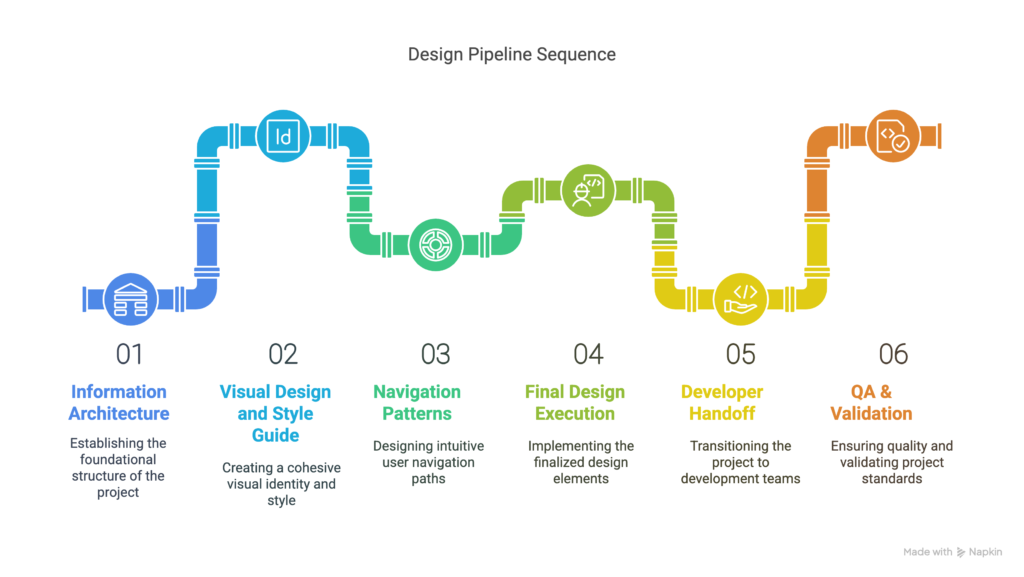
Each stage is thoughtfully structured to maintain momentum and ensure the final product reflects user needs and technical requirements.
Design Team Involvement: Empowering Through Collaboration
I strongly advocate for the involvement of junior and mid-level designers during our workshops. These collaborative environments help them to:
- Identify key opportunities alongside stakeholders
- Document project decisions comprehensively
- Understand technical concerns and development constraints
- Address cross-platform compatibility early in the process
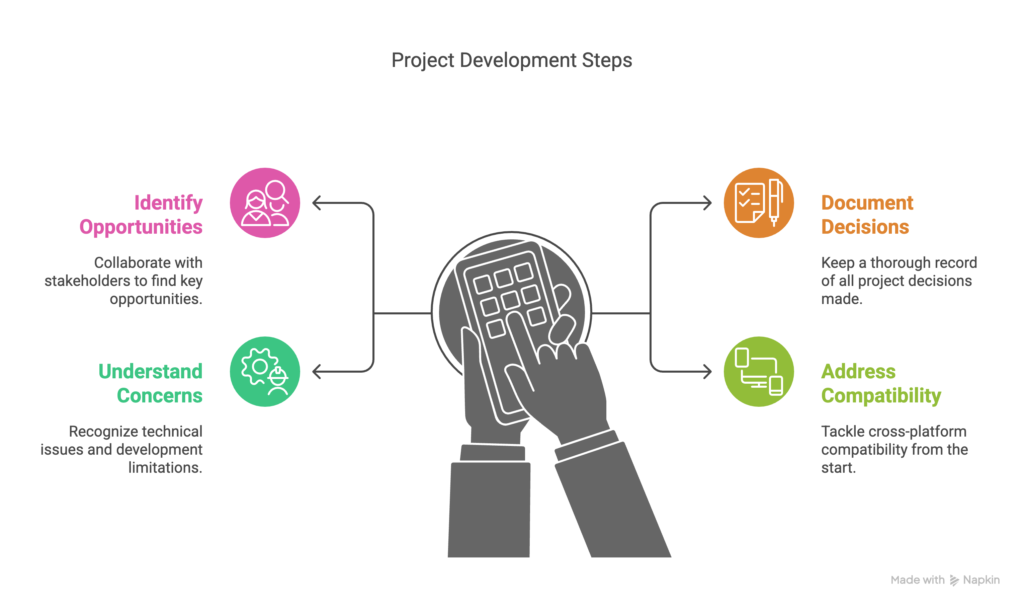
This approach not only aligns and empowers our team but also fosters a sense of ownership at all levels.
Documentation and Design Sprints
We meticulously document each workshop and leverage these insights to finalize requirements and strategically plan design sprints. By breaking down the project into manageable sprints aligned with the development timeline and team capacity, we ensure a proactive approach to delivery. This planning allows us to anticipate developers’ needs, streamline handoffs, and reduce bottlenecks.
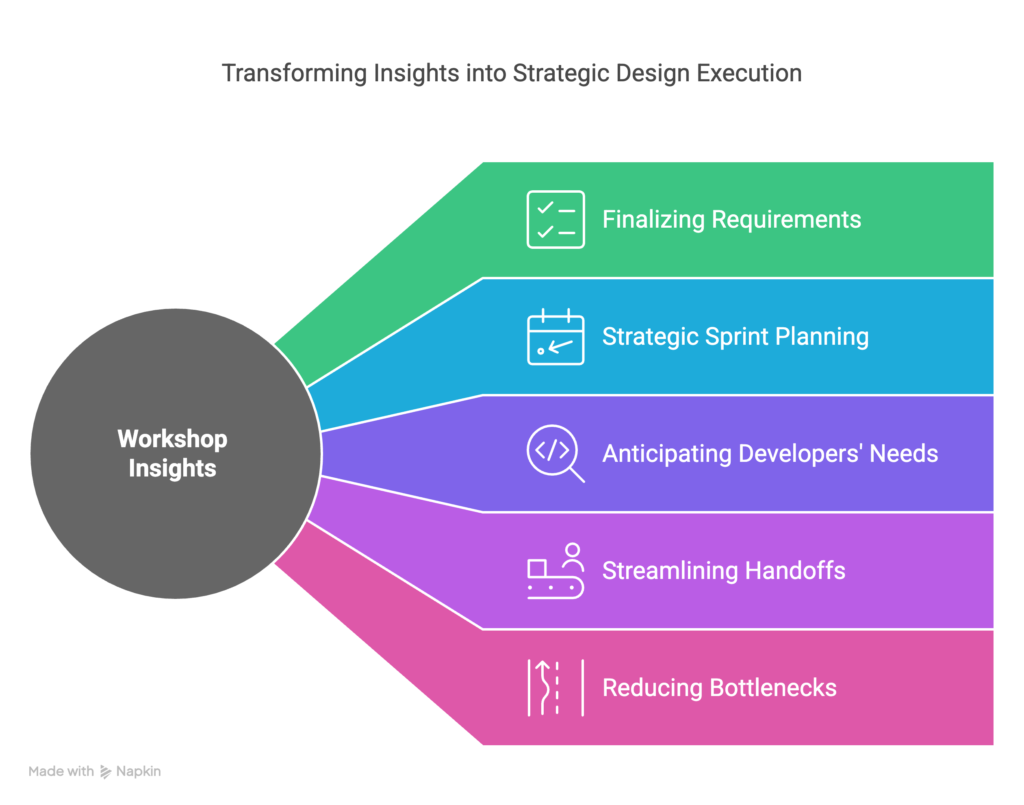
Finalizing Visual Design and Design Systems
If a project requires multiple phases of design improvements, broader usability, and support for various applications, we often adopt a design systems approach. While this requires dedicated resources, it significantly enhances collaboration and increases efficiency.
By the end of the workshop, we determine whether to use existing design systems or create something from scratch. Based on this decision, we develop low-fidelity prototypes and seek approval from all stakeholders. This process has saved us nearly a month of redesigning and refining our initial designs.
Handover to Dev
When handing off Figma designs to front-end developers, it is crucial to ensure the file is clean and organized, with clearly named pages, frames, and layers. Utilize Auto Layout, components, and variants for consistency. Include a design system with typography, color tokens, and reusable UI elements. Add annotations for complex interactions and responsive behavior. Developers can use Figma’s Dev Mode or Inspect Panel for specifications and exportable assets.
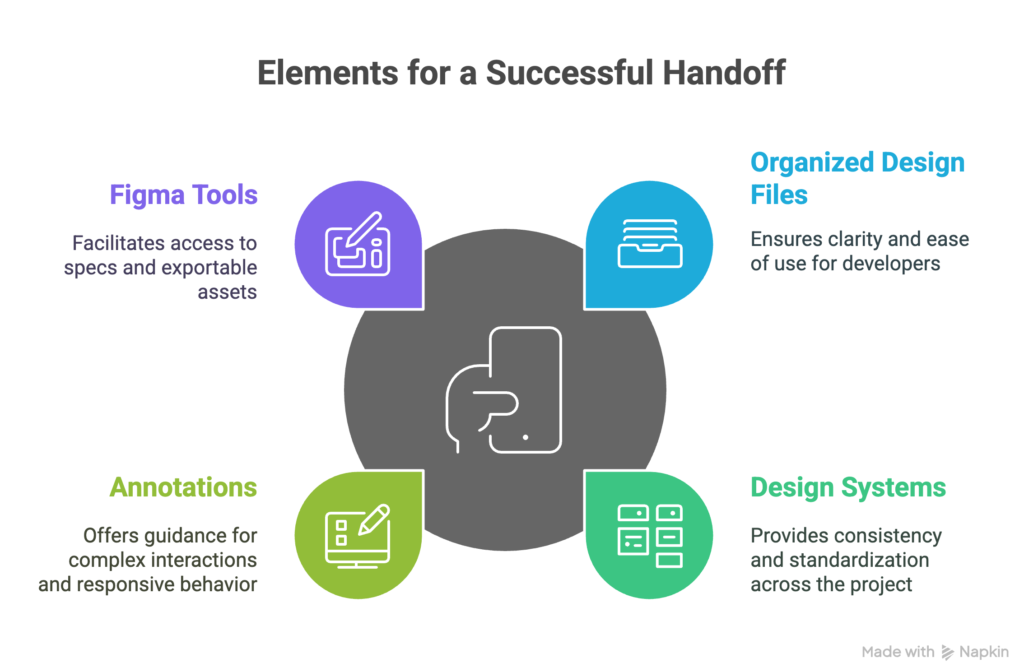
Share the file with the correct permissions and provide context through a handoff document or a Loom walkthrough. Finally, schedule a handoff meeting and remain available for clarifications to facilitate smooth implementation and alignment.
Stakeholder Management
In organizations with low UX maturity, managing stakeholders often involves educating them about the importance of user experience. This includes continually informing team members, justifying the value of your role, and advocating for necessary research time.
Effective stakeholder management requires navigating dependencies and coordinating efforts across multiple teams. It necessitates a holistic approach that involves various disciplines. It goes beyond simply addressing stakeholder needs; it also entails managing egos, overcoming silos and territorial disputes, and alleviating concerns.
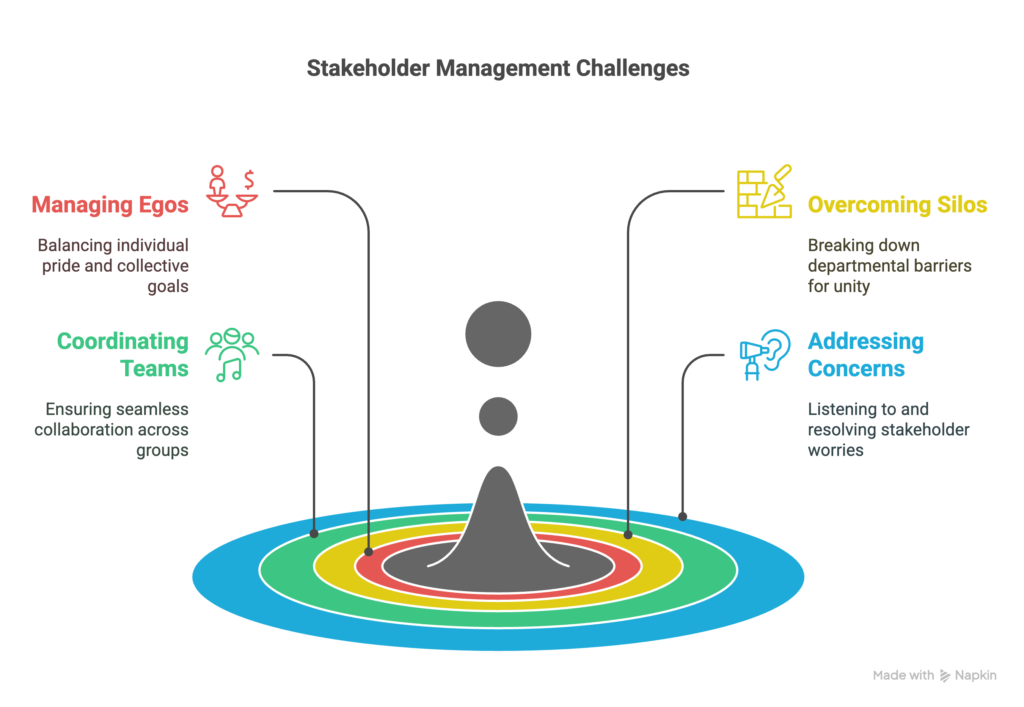
Storytelling
Storytelling is essential for UX managers as it transforms data and user insights into engaging narratives that inspire action and foster empathy. By framing the user journey with relatable pain points and motivations, UX managers can bridge the gap between users and stakeholders, making design decisions more impactful.
Evolve, Innovate, and Excel
I use a foundational model for managing projects and leading teams, but I recognize that each project is unique due to varying requirements, scale, timelines, and budgets. I recommend creating a core project management template focused on business-driven design and a workshop-based model. This framework should be adaptable to meet the specific needs of each project.
I have also trained my team to facilitate workshops, equipping them with skills in conflict resolution, timeline planning, and design finalization, ensuring that each workshop is collaborative, goal-oriented, and aligned with project success.
